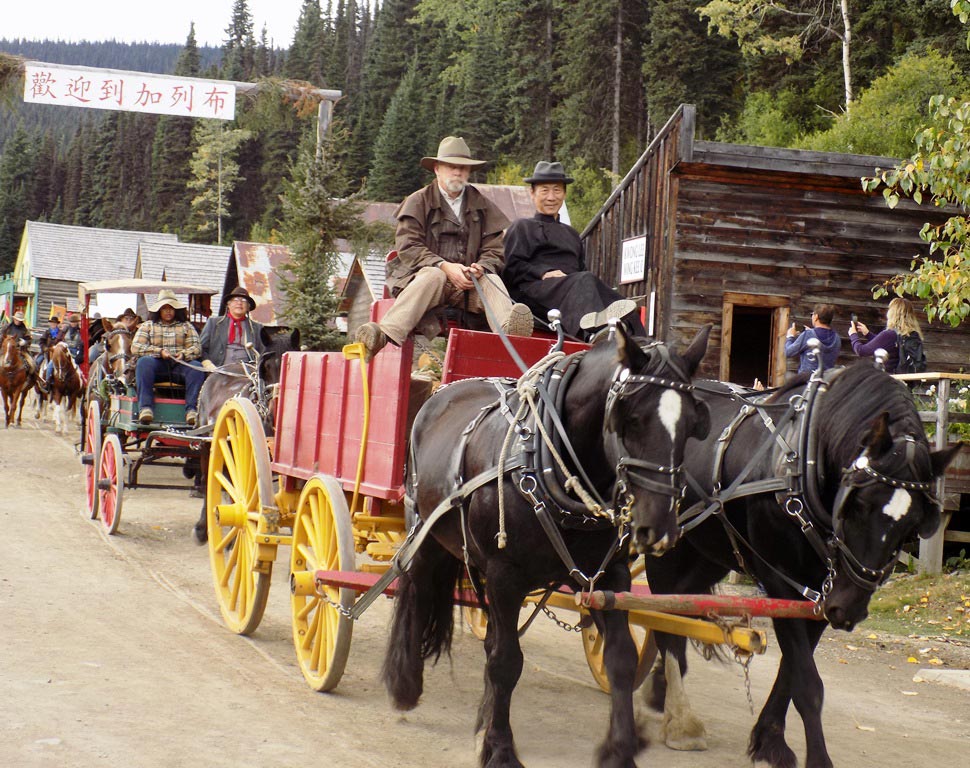Chew Nam Sing employed Indigenous and other packers to haul food and livestock to the gold rush town of Barkerville. In 2019, the New Pathways to Gold Society and partners recreated one of his packing expeditions to Barkerville Historic Town and Park to honour the Cedar-Bamboo Relationship founded by people like Chew Nam Sing. (Credit: Richard Wright photo)
To mark both National Indigenous History Month and National Indigenous People’s Day, the New Pathways to Gold Society (NPTGS) is celebrating the Cedar-Bamboo Relationship between the early Chinese Pioneers and British Columbia’s Indigenous Peoples. This partnership was critical to the founding of modern British Columbia and the creation of its foundational infrastructure.
“There’s a wealth of stories of the Cedar-Bamboo Relationship, many of which were documented by former NPTGS Director Lily Chow,” says NPTGS Multicultural Director Susanna Ng, who is also Head of Content Development at the Chinatown Storytelling Centre.
“Working side by side, the Chinese settlers and Indigenous Peoples built our first highways and bridges, two great national railways and established the entrepreneurial spirit for which this province is renowned.”
Chinese and Indigenous People laboured together to build infrastructure like the Cariboo Waggon Road, Alexandra Bridge and the Canadian Pacific and Canadian Nation Railways. They also went into business together to provide food, goods and employment in B.C.’s booming gold fields and elsewhere.
“Pioneers like Chew Nam Sing worked with and employed Indigenous packers and workers to help feed Barkerville during its heyday,” said NPTGS Secretary Byron Spinks.
“Telling stories of the Cedar-Bamboo Relationship reveals how the founding of our province was Multicultural experience that involved both Indigenous and non-Indigenous Peoples.”
The close ties between the Chinese settler and Indigenous People included intermarriage and other familiar relationships says NPTGS Indigenous Co-Chair Chief James Hobart of the Spuzzum First Nation.
“You just have to read any of the stories told by Spuzzum Elder Annie York to see how close and loving those relationships were,” says Hobart.
“These two peoples laid the foundations for the province we live in today and we owe them all a debt of gratitude for their work and sacrifice.”
NPTGS will be sharing the stories of Chew Nam Sing, Annie York and the great Nalaka’pamux Chief Cexpe’nthlEm (who also had good relations with the Chinese miners during the gold rush) in the month of June. A backgrounder and photos are attached.
“The Cedar-Bamboo Relationship was foundational to the prosperity we enjoy today,” says NPTGS Co-Chair Brent Rutherford.
“It’s great to see this pivotal relationship manifesting itself again as Indigenous communities partner with Chinese Canadian businesses and organizations to reinvent local economies all along the Gold Rush/Spirit Trails from Hope to Barkerville.”


